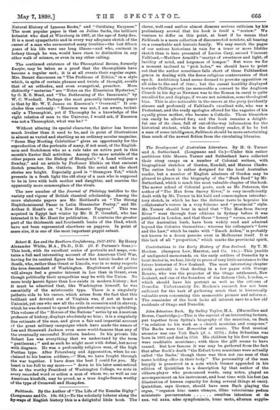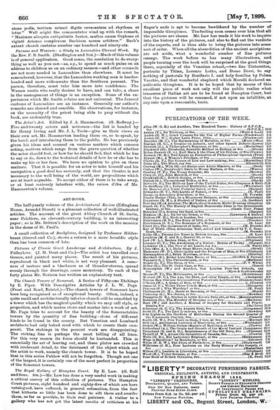John Sebastian Bach. By Sedley Taylor, M.A. (Macmillan and Bowes,
Cambridge.)—This is the reprint of an interesting lecture, put together from Spitta's biography of the musician, on Bach in relation to his work as a church musician and composer." The Bache were the Homeridae of music. The first musical ancestor was one Veit Bach (fl. e. 1570) ; John Sebastian was born in 1685 and died in 1730. His children by his first marriage were creditable musicians ; with them the gift seems to have ceased. But how famous it was may be gathered from the fact that after Bach's death "the Erfurt town musicians were actually called 'the Bache,' though there was then not one man of that name holding office in their body." The personality of the man happily is preserved in a note which Gesner appended in his edition of Quintilian to a description by that author of the cithara-player who pronounced words, sang notes, played an accompaniment on his instrument, and beat time with his feet (an illustration of human capacity for doing several things at once). Quintilian, says Gesner, should have seen Bach playing the organ, " organon hinc menu utmque, illinc velocissimo pedtun ministerio percurrentem omnibus intentnm at de xxx. vol xxxx. ado° symphoniacis, hunc metu, alterum supplo.
alone pedis, tertium minaci digit° revecantem ad rhythma et fetus." Well might the commentator wind up with the remark, "Maximus alioquin antiquitatis fautor, multos unum Orpheas et viginti Arionas complexum Bachium meum arbitror." Bach's extant church cantatas number one hundred and ninety-six.







































 Previous page
Previous page